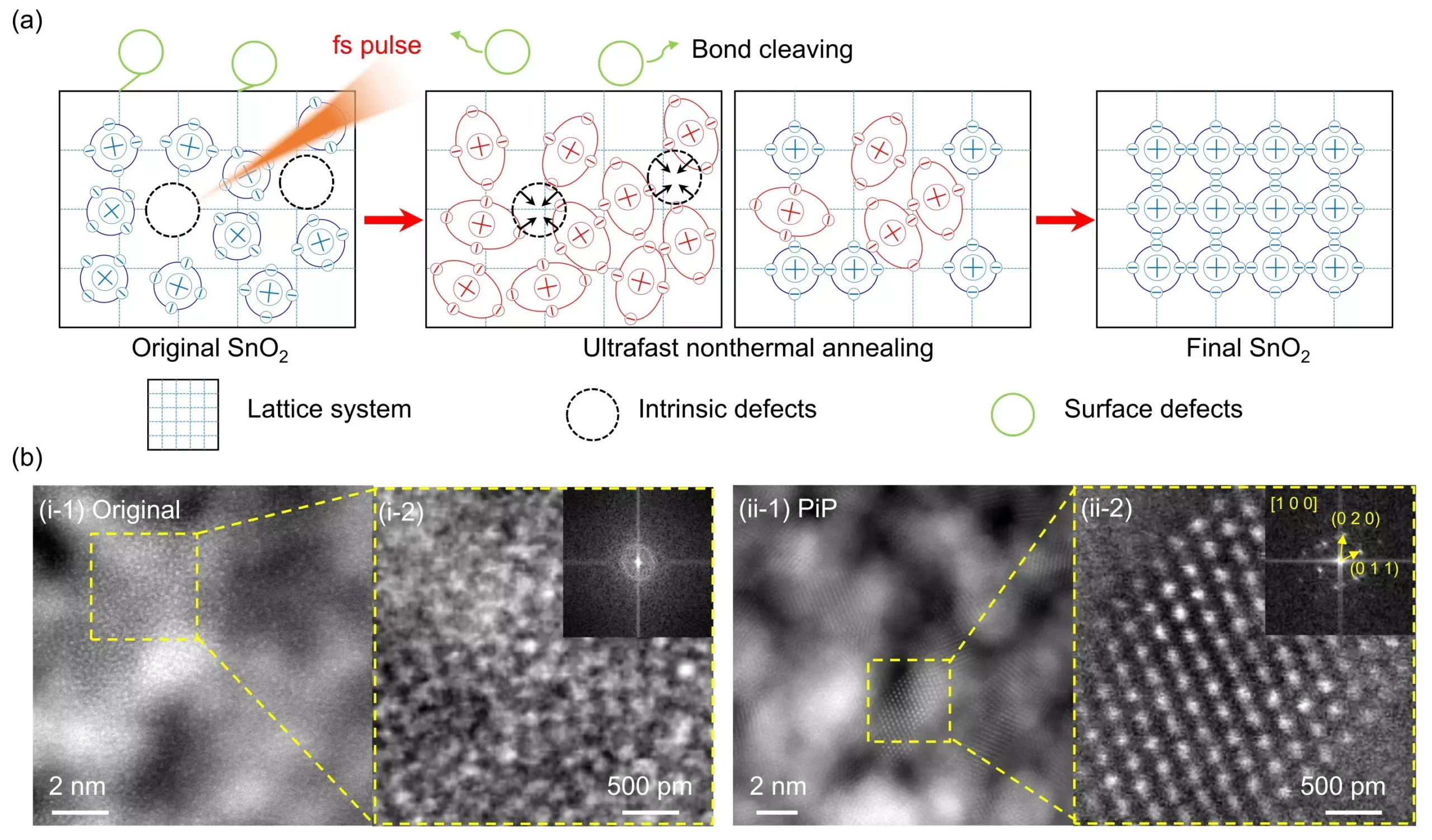Perovskite solar cells (PSCs) have gained significant attention in the renewable energy sector due to their high efficiency and low-cost production. The use of SnO2 as electron transport layers (ETLs) in PSCs has been a common practice, attributed to its high transparency, electron mobility, and favorable band alignment. However, despite its advantages, SnO2 prepared through chemical bath deposition (CBD) often contains intrinsic and surface defects that lead to carrier recombination at the SnO2/perovskite interface, ultimately affecting the overall performance of the solar cell.
Various methods have been explored to passivate defects in SnO2, with thermal annealing and interface modification being the most commonly used techniques. While effective, these processes require high-temperature treatment for extended periods, making them impractical for flexible substrates and energy-intensive. In light of these challenges, the development of a novel approach to passivating SnO2 defects is crucial for enhancing the performance and scalability of PSCs.
Addressing this need, the Center of Femtosecond Laser Manufacturing for Advanced Materials and Devices, led by Prof. Xuewen Wang at Wuhan University of Technology, introduced a groundbreaking photoexcitation-induced passivation (PiP) strategy for SnO2 nanoparticle-based ETLs. This innovative approach involves utilizing a home-built femtosecond laser annealing system equipped with a high-power femtosecond laser and polygon scanning head to passivate defects in SnO2 more efficiently than conventional techniques.
High-resolution transmission electron microscope analyses conducted by Nianyao Chai and Ruohan Yu revealed that the PiP process transforms the amorphous phase of SnO2 into a crystalline phase, thereby improving its crystallinity. Additionally, other surface and optoelectronic characterization techniques demonstrated enhanced defect passivation in the SnO2 film after the PiP treatment. The mechanism behind this process involves ultrafast intensive excitation following laser pulse energy deposition, leading to electron-electron and electron-phonon scattering processes.
Performance Validation and Scalability
Further validation of the PiP technique was demonstrated by Nianyao Chai and Xiangyu Chen through the fabrication of two representative perovskite-based PSCs, achieving impressive power conversion efficiencies (PCE) of 24.14% and 22.75%, respectively. To showcase the scalability of the approach, the team successfully assembled perovskite solar modules with six subcells connected in series, yielding a PCE of 20.26%. Prof. Wang emphasized the universal applicability and scalability of the PiP technique across different types of PSCs and perovskite solar modules, underscoring its potential for commercialization in low-temperature manufacturing processes.
The development of the photoexcitation-induced passivation (PiP) strategy represents a significant advancement in the field of PSCs, particularly in addressing the challenges associated with defect passivation in SnO2-based ETLs. By leveraging ultrafast laser technology, this innovative approach offers a more efficient and scalable method for enhancing the performance and stability of PSCs, paving the way for the widespread adoption of perovskite solar technology in the renewable energy landscape.


Leave a Reply